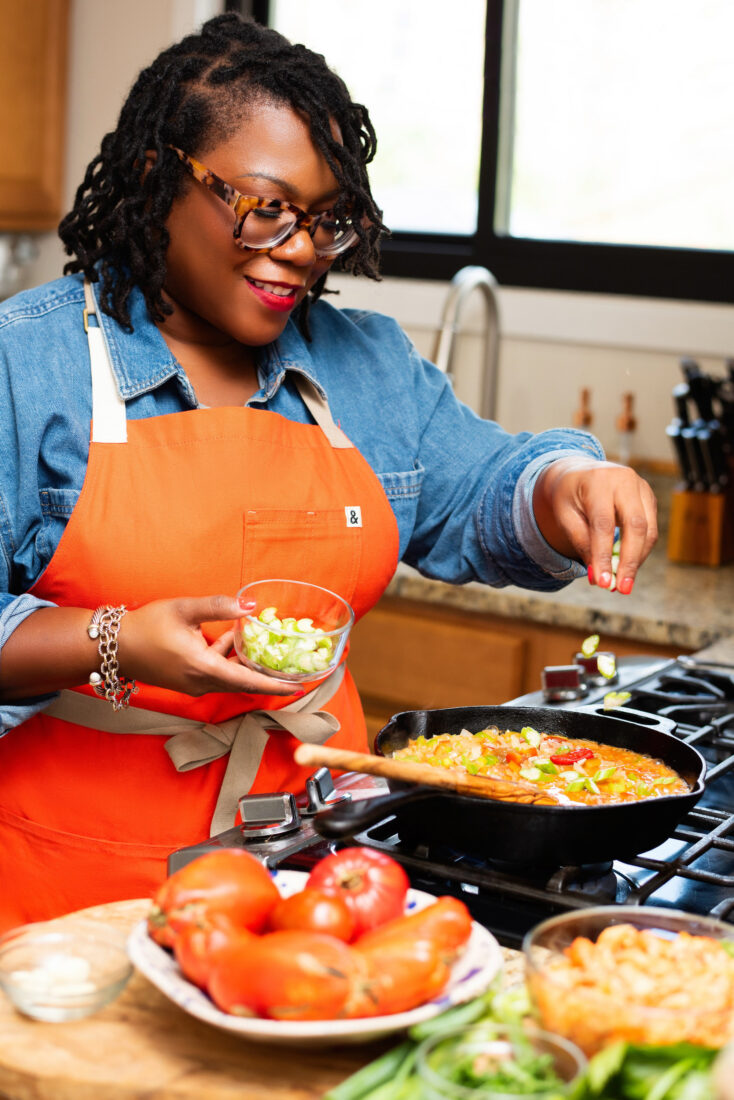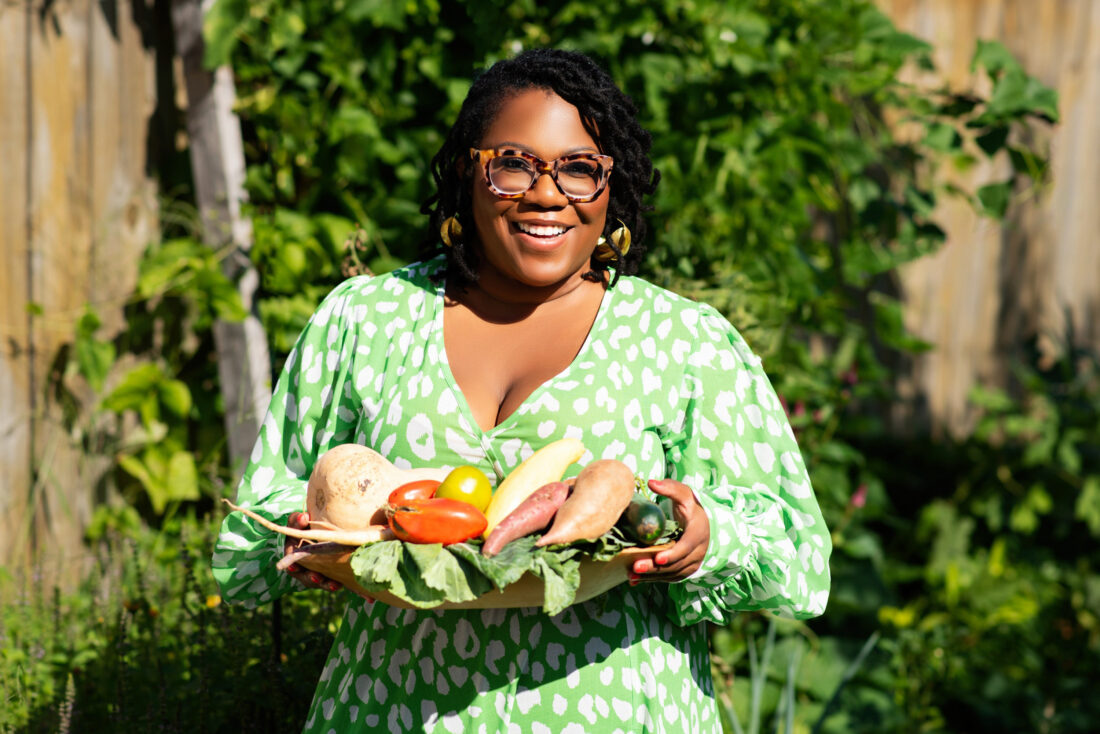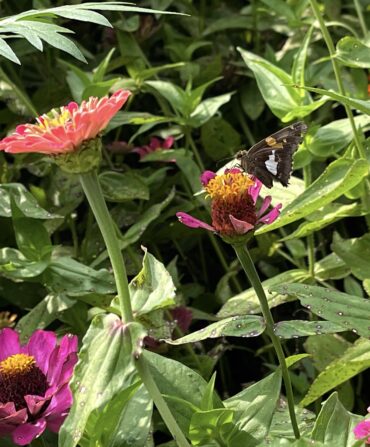“If you have enough space for five large buckets, you can grow collard greens on your patio,” says the edible gardening expert Dominique Charles. The New Orleans native and founder of the consulting service Plots & Pans grew up visiting her grandparents’ farm near Baton Rouge, where her grandmother tended green beans, strawberries, okra, blueberries, and other produce. But before she put her own green thumb to the test, Charles followed the family tradition of attending a historically Black college, studying accounting at Howard University in Washington, D.C. When she purchased her first home in the nation’s capital a decade ago, a friend gifted her a starter garden in four twenty-inch terra-cotta pots.

Pulling on lessons learned from the farm and other local gardening resources, Charles transformed that first garden into a backyard full of bell peppers, tomatoes, strawberries, and a variety of other fruits and vegetables. In the process, she found that gardening nurtured her true passion—cooking—and started posting photos and videos of her homegrown ingredients. An online following turned into a job traveling the country and helping people start their own gardens, complete with multiple appearances on the Today show.

“I love to cook, so the pans started before the plots,” Charles says. “Growing food became something I enjoyed because I could grow what I was buying from the grocery store. The surprise for me is that I found a creative outlet.”
Since Charles lives in a city, she encourages other people in urban areas to explore edible gardening. Here, she shares her step-by-step methods for starting a fall patio garden.
Grow what suits your environment—and tastes. “For example, you can’t grow lemon trees in D.C., but apples, pears, peaches, and stone fruits may do better,” she says. “Another big, important part is what do you eat? I use cilantro, but I don’t use it enough to grow it. If you eat tomatoes, grow tomatoes.”
Work from the bottom up. Choose a container with drainage holes, or for an affordable alternative, drill small holes in a five-gallon bucket.
Add good soil. If you purchase soil from a big-box store, it’s best to enhance it with nutrients in the form of garden food and earthworm castings, Charles says. For aeration, add rice husks and coconut coir, and for pest control and calcium, egg shells.
Start with easy, seasonal items. In the cooler months, Charles recommends planting hearty herbs and vegetables such as garlic, ginger, green onions, parsley, rosemary, shallots, and thyme. Start your own garlic crop from organic cloves purchased from the grocery store; layer a couple of cloves into the soil pointy side up. “Water every day for the first week and then every other day after that,” Charles says. “Within a week you’ll see garlic chives start to grow. By summer you’ll see a whole bulb.”
For intermediate and experienced urban gardeners, Charles says beets, collard greens, kale, and swiss chard are all fall crops that grow well in a bucket.

Control the pests. To deter slugs, Charles suggests placing small containers of beer around the garden. “Horn worms usually attack tomatoes, and the only thing you can do is kill them, unless you have chickens who eat them,” she says. “For leafy greens I use neem oil and diatomaceous earth. I also add garlic to collards and kale because pests don’t like the smell.”
Make it beautiful. Mixing flora with fruits and vegetables is part of Charles’s signature style. She adds marigolds alongside herbs and lately has experimented with dahlias, poppies, and celosia. She also loves the beautiful leaves that grow around Baltimore fish peppers, which are often found in Louisiana hot sauce.
“Hot peppers are going to bear the most aesthetically pleasing fruit,” Charles says. “You can use [fish peppers] to make a hot sauce with vinegar, ginger, garlic, and salt; or to spice up a salad. They’re hot, but not ‘OMG I’m about to die’ hot.”








